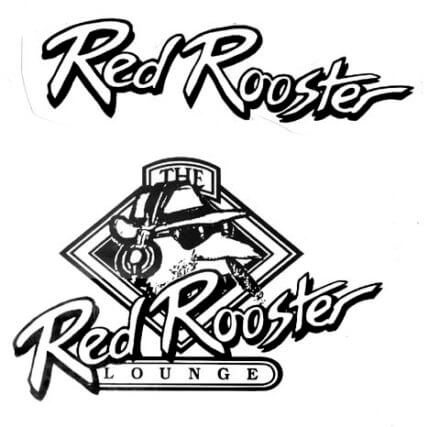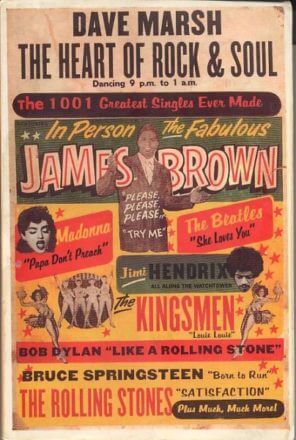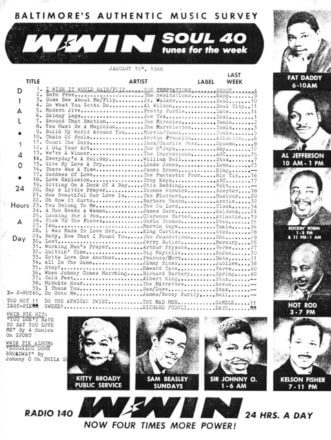A Q&A With The Red Rooster, Part 1
 Blues Bites From The Red Rooster Lounge
Blues Bites From The Red Rooster Lounge
The Red Rooster is the radio handle of longtime Boulder-based deejay, writer and photographer Cary Wolfson.
He’s been the host of the syndicated show Blues From the Red Rooster Lounge since 1985, and joined the Colorado Sound late last year. Blues Bites From The Red Rooster Lounge is on every Thursday and Friday at 9 pm.
On those nights, The Red Rooster counts down the 111 best Blues tracks of all time.
It’s one of the most diverse Blues lists you’ll find, covering the genres’ many decades of influence. You can stay up to date with the 111 tracks here.
Recently, we spent time discussing the list, dissecting the meaning of the Blues, chatting about the best players of all time, and more.
Part 1 of our Q&A is below. We will have Part 2 up next week.
Soundcheck: First of all, we are so excited to have you on The Colorado Sound. We all look forward to your Blues Bites, Thursday and Friday at 9 pm. The listeners are loving the journey you are taking them on as you count down the best 111 blue tracks of all time.
First question for you. How hard was it to come up with 111? Couldn’t have just as easily been a thousand, or a million?
The Red Rooster: Thanks, Chris. I’m very excited to be associated with a forward-looking station like The Colorado Sound.
The inspiration came from rock critic Dave Marsh’s 1988 book, The Heart of Rock & Soul, which is subtitled “The 1001 Greatest Singles Ever Made.” I’d had major disagreements with some of Marsh’s opinions in the past, but once I started thumbing through the book I couldn’t put it down.
As Marsh openly acknowledges, no such list can really be definitive or absolute — he frankly admits that his top 250 choices could easily be reversed with no lasting damage to the object of the book. And that object is essentially to stimulate discussion (or argument if you prefer) over what makes a great single. And art. And soul. And rock’n’roll.
If that was indeed the goal, it certainly set me to thinking. Coming up with 1001 singles (and something intelligent to say about each) is a daunting task. But I figured that I should be able to come up with, say, at least 101 songs (I couldn’t limit myself to singles) that would demonstrate the essence of what I call Rooster Music: the blend of Blues, R&B, “lost” soul and gospel that I’ve been playing on my radio shows since the early ‘80s.
At the time I was publisher and editor of BLUES ACCESS magazine, where I wrote a column called “Rooster Pickin’s.” I started off by combing through the songs that had gotten played the most on my syndicated show, Blues From the Red Rooster Lounge. Twenty of those tunes were included in the first article I wrote, calling it Rooster Music: The First 2000 Years. Over the course of six issues of the magazine it eventually bulged to 111 songs. 
I don’t look at it as a “greatest Blues songs of all time” set, though. Instead, these are performances that over the years have moved me, ones that I keep coming back to when I want music that touches me way down deep. In many cases I’ve passed over obvious choices by well-known artists in favor of that obscure gem you might be likely to miss. In any event, they’re personal selections made in the hope that we can share the same musical wavelength. It’s mostly Blues but there’s also other related stuff.
Simple question for you – why the Blues?
Blues underpins so much of what is right about popular music. Maybe without the Blues we might still have had the Rolling Stones, the Beatles, the Dead, the Allman Brothers Band, Stevie Ray Vaughan, George Thorogood, Jimi Hendrix, Ray Charles, Gary Clark Jr., etc. Maybe. But they sure would’ve sounded a whole lot different.
But Blues is important in its own right, not just because of who or what it influenced. Stripped down to its essence, Blues is one guy/gal with a guitar, honestly expressing life’s joys and pain. There’s no artifice, no need for glitz and definitely no place for “auto-tune.”
Back in the day I had heard Blues cloaked in the forms of rock and folk music without really being aware of what it was. That all changed on the night I brought home a two-record set called Hooker’n’Heat, featuring John Lee Hooker and the rock-boogie band, Canned Heat. The first disc features Hooker solo or with simple accompaniment from Alan Wilson on harp or piano. With John Lee stomping out the beat with his foot and intoning so low, I suddenly heard everything I liked in music peeled away to its most basic, bedrock layer. I was “Hooked.”
You’re just getting started on the countdown and we have about 90 songs to go. Aside from starting at number 111, where do you recommend the beginner start exploring this rich tapestry of American music?
If you have the opportunity, get out and hear some live Blues. Even if there’s no Blues club where you live, you can come out to events like the Greeley Blues Jam in June that always brings in great entertainment. Check out a group like the Colorado Blues Society or the Mile Hi Blues Society.
- Check out one or two of these lists to see just how much Blues has informed the pop music of the late 20th century. Once you find a familiar song, go looking for the Blues original which is often better than the version it inspired.
- Rock hits you didn’t realize were Blues songs
- Top Ten Rock and Roll Covers
- Transformative Blues Covers
Blues is often equated with some of the best lines and lyrics in American songwriting. What about the Blues in your opinion makes it so uniquely American?
Isn’t it strange in a culture like ours, steeped in racism, that young Caucasian people are drawn to African-American culture, music and slang? We see it now with rap and it’s been true since at least since the Beat Generation came on the scene, and even before. And it’s black American pathos and turns of phrase that underlie the Blues.
We can’t turn away from the fact that the Blues was born of people who had been stolen, enslaved and then “liberated” into a society that didn’t value them. They were expected to be servile, but in their music they could express the accumulated outrage and frustration as well as whatever small joys they could find. Their language was colorful, sometimes crude and often very poetic.
Along those same lines, where do you think American Blues owes it’s deepest heritage to? There are many theories out there, and I’d love to hear your origin story.
Certainly it is connected to some forms of African music. And as I said above, it has roots in the post-Reconstruction South. People who were refused education and had limited English language skills could still pour their feelings out with simple moans and guitar strings. Here’s a perfect example, Blind Willie Johnson’s “Dark Was the Night,” recorded in 1927.
So, while there have been plenty of incredibly talented Blues interpreters, we have to remind ourselves of where it sprung from.
I once had the opportunity to drive the famous folklorist Alan Lomax around the Mississippi Delta. He emphasized to me that when he was down there collecting songs in the ‘40s and ‘50s the Deep South was nothing less than a fascist state. Life can be good in a fascist state … if you’re one of the fascists. Not so much if you were poor and black.
The great Blues-Rock guitarist Mike Bloomfield said of one of Robert Johnson’s mentors, Eddie “Son” House, “I can play Blues but I’m not Son House. I haven’t been pissed on and shitted on like he has.” Or to paraphrase my friend poet John Sinclair, “White people in the South really liked the Blues. They just didn’t like the people that made it.”
Do you have a preferred blues era that stands out among others?
I go for the ‘tuff big city sounds that were going on in the ‘50s and ‘60s. So many Blues legends were at their height then: Muddy Waters, Howlin’ Wolf, Lightnin’ Hopkins, John Lee Hooker, Willie Dixon, Otis Rush, Magic Sam, Buddy Guy, T-Bone Walker, Abert King, B.B. King, Freddie King, Koko Taylor, Etta James.
How did you discover the Blues? How did you know that “this is the music for me?”
Once I graduated from listening to the same Top 40 crap that everybody else was listening to I was pulled in a few different directions. The Folk Revival (or as we sometimes refer to it, The Great Folk Scare) of the 1960s got me tuning in to music that wasn’t coming from a commercial place with all its polished production. I’m sure I heard some Blues at that time (like Mississippi John Hurt) but it was all folk music to me.
I grew up in Baltimore which had several AM radio stations that targeted a younger black audience. Once I got bored with all the pop Top 40 music this is what I started tuning in to. Just look at this list. It’s hard to imagine being able to hear Aretha Franklin, Inez & Charlie Foxx, James Brown, William Bell, Troy Kets, Otis Redding, Clarence Carter, Carla Thomas, King Curtis, James Carr, Big Maybelle, Albert King, Sam & Dave on a daily basis. In 1967 I got to see James Brown in front of a nearly all-black audience in Washington, D.C. After that it was impossible to go back to the world of Frankie Avalon and Pat Boone. 
And then there were the DJs, who were the definition of “personality radio.” Paul “Fat Daddy” Johnson once got taken off the air for his salacious (and humorous) comments about the Supremes. “Rockin’ Robin” was a Baltimore radio legend who appeared at various times on just about every soul station around. They were all really cool, but the king of them all was Maurice “Hot Rod” Hulbert, now a member of the National Broadcasting Hall of Fame. He had a great jive patter, aimed directly at America’s “keen teens.” Here’s something I wrote about him just after his death in early 1997.
And of course I was listening to all the great rock music of the day: the Beatles, the Stones, Canned Heat, Santana, the original Fleetwood Mac, Savoy Brown. In early 1970 I saw the Grateful Dead (along with opening act Miles Davis) at the Fillmore West. With a heavy dose of LSD under my belt I was leaning on the stage right in front of the Dead’s resident bluesman, Ron “Pigpen” McKernan, as he wailed on “Good Lovin’” and “This Is a Man’s Man’s World.” My world was never quite the same.
Later that year I made two significant record purchases on the same night: Layla, by Derek & the Dominoes, and the Hooker’n’Heat album I already talked about. From then on my fate was sealed.
Word association: Write a few thoughts that initially come to mind.
Best slide player:
Muddy Waters was such a potent force as a vocalist and physical presence that his guitar playing is often overlooked. Put to rest any doubts that he could play slide with the best of them, check out this live version of “Honey Bee.”
Next in line would have to be Elmore James.
Best electric player:
Too many to separate from here, though my personal taste falls heavily on Chicago. Magic Sam (Sam Maghett) was the prototype of the West Side guitar gunslinger. The two studio albums he did in his brief lifetime, West Side Soul and Black Magic, are both enshrined in the Blues Hall of Fame, and who knows what he would’ve done if he hadn’t died of a heart attack at the age of 32 in 1969. Here’s an excellent example of great singing and rocking guitar.
But then I could never slight B.B. King, the Colossus who stands astride the entire Blues genre. The Beale Street Blues Boy’s career spanned over six decades and if there were any artist who would be considered a household name it would be him. For a reason why, look no further than this incredible track, recorded live in 1966. And I just love his spoken introduction: “We’re gonna do our best to try to move you tonight. If you like the Blues I think we can.”
Otherwise, Otis Rush (who, as you will eventually see, features prominently on the Rooster Music compilation), Buddy Guy, Luther Allison, Jimmy Dawkins, Earl Hooker and Pat Hare are also right up there on the Chicago scene. Texans Albert Collins, T-Bone Walker, Stevie Ray Vaughan, and Johnny Copeland rank highly, as well.
Best bottle neck player:
I’d have to go with Mississippi Fred McDowell, who actually first played slide with not a bottle neck but a beef bone! He was a big influence on Bonnie Raitt (no slouch in her own right as a slide player). The Rolling Stones, too, were paying attention to songs like this one.
Best harp player:
Little Walter Jacobs stands out for me, out of a VERY crowded group. He took what had for the most part been a front porch or campfire type of instrument and electrified it into the centerpiece of a big city sound, both as a member of Muddy’s band and as a leader in his own right. Here’s a rare video clip from 1967:
After Walter you can take your pick from Junior Wells, Big Walter Horton, George “Harmonica” Smith, Snooky Pryor, William Clarke and my friend Charlie Musselwhite.
Best boogie-woogie player:
Boogie-woogie piano dates back to the 1920s and people like Albert Ammons, Pete “Roll ‘Em Pete” Johnson and Meade Lux Lewis. The best one I ever saw live was Big Joe Duskin from Cincinnati.
Best piano Blues player:
Otis Spann was Muddy Waters’ cousin and he held down the piano chair in Muddy’s great band from 1952 until his death in 1970.
Again, there are so many more can’t-miss players, the cream of whom would include, Pinetop Perkins, Johnny “Johnny B. Goode” Johnson, Lafayette Leake, Professor Longhair, Memphis Slim, Ray Charles and Charles Brown.
Note: We will have Part 2 of our Q&A with The Red Rooster next week when we’ll talk about the important Blues cities, and discuss contemporary Blues.
Be sure to listen to Blues Bites From The Red Rooster Lounge, every Thursday and Friday at 9 pm. This week, he will count down to number 89.

